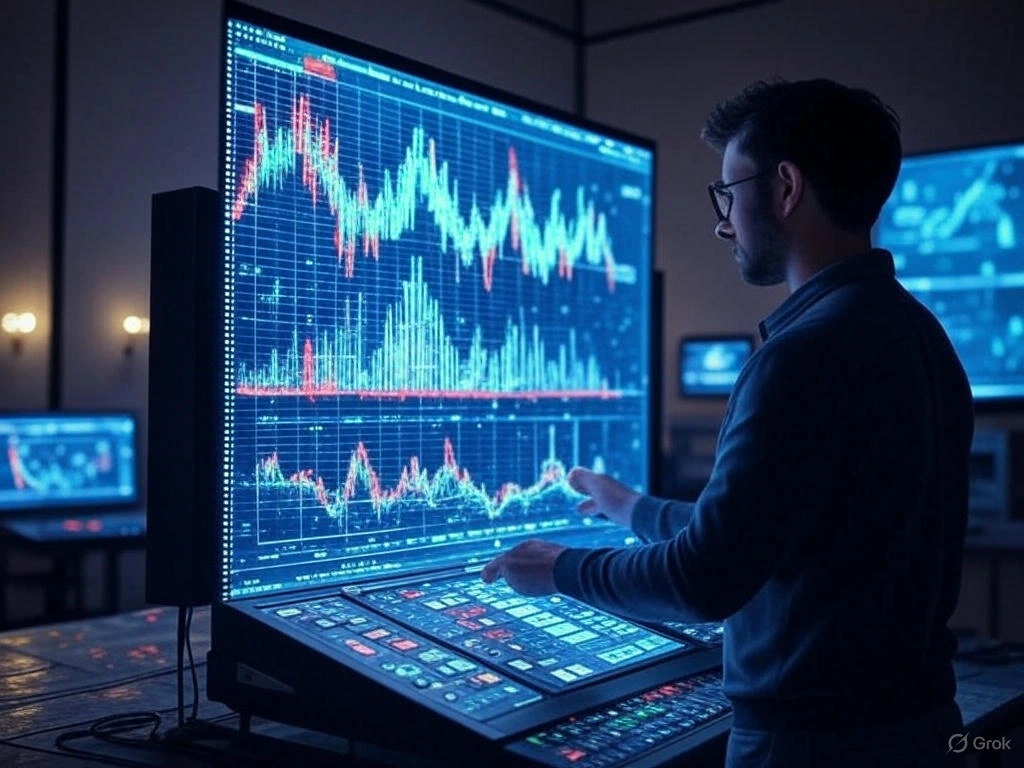Mastering LED Screen Control Systems: Repair, Troubleshooting & Longevity Tips
Published: 29 Apr 2025
The Ultimate Guide to LED Screen Control Systems
LED screens power everything from digital billboards to concert stages.Mastering LED Screen Control Systems , But behind their brilliance lies a complex network of control systems that manage performance, connectivity, and durability. Whether you’re a technician, installer, or enthusiast, this guide dives deep into:To read more click at The Complete Guide to LED Screen Installation: Modular Panels, Mounting Structures & Safety Protocols ect.
- Repair techniques for common and complex issues.
- Troubleshooting workflows to diagnose problems fast.
- Longevity enhancement strategies to maximize screen lifespan.
- Innovations in control system design and manufacturing.
Let’s light up the knowledge! 💡
🎮 Section 1: Understanding LED Screen Control Systems
1.1 Core Components of LED Control Systems
Modern LED screens rely on these critical parts:
- Control Cabinet: Houses power supplies, controllers, and signal processors.
- Sending Card: Converts video signals into data packets (HDMI/SDI to Ethernet).
- Receiving Card: Distributes data to individual LED modules.
- HUB Board: Bridges receiving cards and modules, ensuring synchronized output.

1.2 Types of Control Systems
- Synchronous Systems: Real-time playback (e.g., live events) using media players.
- Asynchronous Systems: Pre-loaded content for standalone operation (e.g., billboards).
- Wireless Control: Bluetooth/Wi-Fi-enabled systems for remote management.
High-end systems use FPGA chips (Field-Programmable Gate Arrays) for ultra-low latency processing.
🔧 Section 2: LED Screen Repair Techniques
2.1 Diagnosing Common Issues
Start with these checks:
- Power Supply Failures:
- Test voltage output (5V/12V) with a multimeter.
- Replace swollen capacitors or burnt fuses.
- Dead Pixels:
- Use pixel correction software to remap or bypass faulty LEDs.
- Signal Loss:
- Inspect Ethernet cables for damage; swap with Cat6 shielded cables.
2.2 Advanced Repairs for Control Hardware
A. Receiving Card Replacement
- Step 1: Power off the screen and disconnect cables.
- Step 2: Remove the faulty card and install a compatible replacement.
- Step 3: Reflash firmware via USB to ensure compatibility.
B. HUB Board Repair
- Cold Solder Joints: Reflow solder using a hot air station (350°C).
- Corroded Traces: Clean with isopropyl alcohol and bridge gaps with conductive epoxy.
Safety First: Always discharge capacitors before handling power components! ⚡
2.3 Environmental Damage Repairs
- Water Ingress:
- Dry components with silica gel; replace corroded parts.
- Apply conformal coating to PCBs post-repair.
- Heat Damage:
- Upgrade cooling fans or add heat sinks to control cabinets.
🚨 Section 3: Troubleshooting LED Control Systems
3.1 Step-by-Step Troubleshooting Flowchart
- No Display:
- Check power supply → Test sending card → Inspect signal cables.
- Flickering Screens:
- Verify grounding → Update firmware → Replace faulty receiving cards.
- Color Mismatch:
- Recalibrate via control software → Check data cable integrity.
3.2 Software-Related Issues
- Firmware Glitches:
- Reinstall the latest firmware from the manufacturer’s portal.
- Control Software Crashes:
- Clear cache files or run diagnostics in safe mode.
Tool Recommendation:
Use LED Studio or Novastar software for real-time monitoring and debugging.
⏳ Section 4: Enhancing LED Screen Longevity
4.1 Preventive Maintenance Routines
- Monthly Checks:
- Dust control cabinets with compressed air.
- Tighten loose connectors and cables.
- Bi-Annual Tasks:
- Reapply thermal paste on heat sinks.
- Test backup power systems (UPS).
4.2 Environmental Optimization
- Temperature Control: Maintain 20–25°C ambient temperature.
- Humidity Management: Use dehumidifiers in tropical climates (keep RH <60%).
- Surge Protection: Install lightning arrestors and voltage stabilizers.
Case Study:
A stadium reduced screen failures by 40% after adding HVAC ducts near control cabinets.
4.3 Software and Firmware Updates
- Brightness Dimming: Reduce output by 20% during off-peak hours to lessen LED stress.
- Pixel Refreshers: Run automated programs to prevent image burn-in.
🏭 Section 5: Quality Control & Manufacturing Innovations
5.1 Quality Control in Production
- Burn-In Testing: Run screens for 72+ hours to identify early failures.
- Signal Integrity Tests: Validate data transmission at 10Gbps speeds.
- IP Rating Certification: Validate water/dust resistance (e.g., IP65 for outdoor use).
5.2 Innovations in Control Systems
- AI-Powered Diagnostics:
- Machine learning predicts failures by analyzing voltage fluctuations.
- Modular Design:
- Hot-swappable cards minimize downtime during repairs.
- Energy-Efficient Controllers:
- Dynamic power adjustment cuts energy use by 30%.
Example:
LG’s webOS Smart Control allows remote troubleshooting via cloud platforms.
❓ FAQ: LED Screen Control Systems
Q1: Why does my LED screen show “No Signal”?
A: Faulty sending cards, loose HDMI cables, or incorrect input source settings.
Q2: Can I repair a water-damaged LED screen myself?
A: Only if you’re trained! Moisture can cause short circuits—consult a professional.
Q3: How often should I update control system firmware?
A: Every 6–12 months or after major software upgrades.
Q4: What’s the average lifespan of an LED control cabinet?
A: 7–10 years with proper maintenance.
Q5: Are wireless control systems reliable?
A: Yes, but use dual-band Wi-Fi or wired backups for critical setups.
🏁 Conclusion
Mastering LED screen control systems requires a blend of technical know-how, proactive maintenance, and staying updated on innovations. From fixing dead pixels with pixel remapping to leveraging AI for predictive repairs, the future of LED tech is bright—and so is your ability to keep it shining!
🔌 Stay Powered Up:
Bookmark this guide for your next repair or upgrade project!

- Be Respectful
- Stay Relevant
- Stay Positive
- True Feedback
- Encourage Discussion
- Avoid Spamming
- No Fake News
- Don't Copy-Paste
- No Personal Attacks



- Be Respectful
- Stay Relevant
- Stay Positive
- True Feedback
- Encourage Discussion
- Avoid Spamming
- No Fake News
- Don't Copy-Paste
- No Personal Attacks





